By Dayna Woolbright
Norwich is well known for its industrial past, manufacturing textiles, shoes and mustard from the famous Colmans mustard factory, but what about chocolate?
The Gressenhall Superstore holds an abundance of social history items that relate to Norwich’s industrial heritage but it was some equipment used in Norwich’s chocolate factory that inspired this weeks blog. I also had a great personal interest in the history of locally produced chocolate as one of my earliest memories of Norwich is seeing the Nestle factory, particularly exciting for a child whose favorite book was Roald Dahl’s ‘Charlie and the chocolate factory!’ So sit back and enjoy a whistle stop tour through all things chocolaty, no golden ticket required…
In 1857 Chemist, Alfred Jarman Caley came to Norwich and founded a chemists shop in London Street. By 1863 Caley was producing mineral waters in a room at the back of his shop as a side-line enterprise, they proved highly popular and only a year later a larger premise was sort to cope with demand. The new location was on Bedford Street but it wasn’t long before Caley was to move again, with the help of his son Edward J Caley they took over a building in Chapel Field formerly occupied by a cloth weaver. The Chapel Field factory became known as the Fleur-de Lys works, from here they produced a number of drinks products one of the most famous being the Ginger beer. The sale of soft drinks was seasonal and instead of laying off his workers Caley began to manufacture cocoa which in turn led to the production of chocolate which began in 1886. This chocolate box lid is just one of the many items in the Norfolk Museums collection which relates to Norwich’s history in the manufacture of chocolate.
Alfred retired in 1894 and died shortly after, Frederick W. Caley joined the business and along with Edward they expanded the business and began making crackers.
By 1904 the Caley’s company were employing 700 people and their chocolates and crackers were shipped all over the world. At this time Swiss milk chocolate was considered to be the best quality and vast quantities were being imported, to rival this Caley’s decided to produce their own milk chocolate using milk supplied by Mr. Garrett Taylor from his herd of Whitlingham Red Poll cattle. The venture was a success and Caley’s became renowned for their fine milk chocolate.
When War broke out in 1914, Caley’s chocolate factory also played their part by sending thousands of bars of their ‘Marching Chocolate’ out to troops.
In 1918 the Caley’s family business was sold to The African and Eastern Trade Corporation who continued to trade under the Caley’s name.
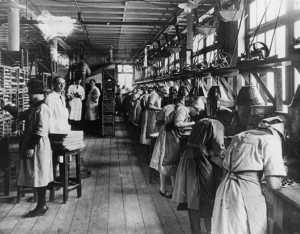
Hand- making chocolates at Caley’s. Picture Norfolk –
http://norlink.norfolk.gov.uk/02_Catalogue/02_001_Search.aspx?searchType=97
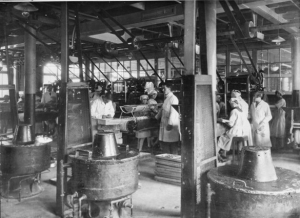
Caley’s factory during the 1920’s. Picture Norfolk – http://norlink.norfolk.gov.uk/02_Catalogue/02_001_Search.aspx?searchType=97
This box of ‘Midget crackers’ were produced around 1930, the label reads ‘Caley midget crackers made in Norwich, England, No. 144 containing miniature toys, novelties and charms also snaps.’
Many of the early Caley’s Christmas cracker packaging designs can be attributed to the young Alfred Munnings, who was later to become Sir Alfred Munnings. We hold a number of his coloured lithographs in the Norfolk Museums’ collection, including this one for ‘Caley’s Christmas Pudding Crackers.’
Munnings’ paintings can also be seen in the galleries of Norwich Castle Museum and Art Gallery.
In 1932, sold the firm to John Mackintosh & Sons Limited of Halifax for £138,000! It was under the Mackintosh name that the first pack of ‘Rolo‘ was manufactured in Norwich in 1937, the sweet treat grew so popular that the factory produced two tons an hour!
However disaster struck only a few years later during the advent of WW2 when an incendiary raid on Norwich saw the complete destruction of the factory. Rebuilding began in 1946 and shortly after some limited production began but it wasn’t until 1952 that work on the factory was completed.
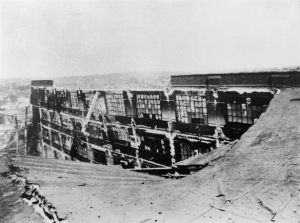
Caley’s chocolate factory, War damage 1942. Picture Norfolk – http://norlink.norfolk.gov.uk/02_Catalogue/02_001_Search.aspx?searchType=97
After the war there were substantial changes made to the operation of the factory; new products such as Munchies and Caramac were introduced and the mineral water business was sold to a local brewer. In 1953 the manufacturing of Caley’s Christmas crackers was merged with Tom Smith and Company to form a new enterprise. However since Caley’s was a well known and well established brand they continued to operate under the Caley’s name. This box of Caley’s ‘Art Crackers’ is one of my favourite objects! Manufacture in the 1950’s these insect crackers have a quirky and playful design!
In 1969 Mackintosh merged with Rowntree. These machines are currently held in our reserve collection and have some interesting names!
This is a toffee guillotine made by Low and Duff of Monifieth, Scotland. It was used by Rowntree-Mackintosh during the early 20th Century to cut slabs of toffee.
This is a break roller dating from the late 19th – early 20th century, it has a heavy triangular cast iron frame with a metal table over which material flows. The rollers are adjustable and were used to reduce the centre substance of chocolates to the required thickness. This was essential as each chocolate had to weigh a precise amount. The break rollers would have been used for coconut, coconut paste, caramel and fudge.
By the late 20th Century the Chapel Field site occupied 7 acres but much of the work was now done by machine such as the ones above, only in centre making and packing were traditional methods used. This hydrometer was used in the early to mid 20th century to measure the specific gravity of syrup mixes used in soft centres.
Around this time the Norwich factory was also responsible for producing over 40 million chocolate eggs on the run up to Easter!
In 1988 the Rowntree-Mackintosh factory at Chapel Field was purchased by Nestle where they continued to produced favourites such as Rolos and Yorkie bars, but sadly only eight years later production was moved to York causing the factory to close with 900 workers losing their jobs. The planned closure provoked much protest as illustrated by this sticker held in the NorfolkMuseum collection. The slogans state ‘Save our factory; don’t make it the ‘last Rolo’ at Norwich Nestle Rowntree, Norwich’ and ‘Nestle Norwich help to save our factory and 900 jobs.’
Unfortunately despite vocal campaigns nothing could be done to save the factory and in 2004 it was demolished and in its place now stands the Chapelfield shopping centre which opened in 2005.
If you want to know more about Norwich’s delicious chocolaty heritage visit the BridewellMuseum which reopened in July 2012 after a £1.5 m refurbishment! Follow the link below for more information http://www.museums.norfolk.gov.uk/Visit_Us/Bridewell_Museum/index.htm or follow the Bridewell museum on Twitter @bridewellmuseum
Independent chocolatiers have also played a part, in 2011 Terri and Matt Legon established the Norfolk based Gnaw chocolate company with new and exciting flavours that could rival Willy Wonka such as Chilli & Lime and Coffee & Mint. Within months of setting up shop their products were picked up by the first distributors and now the Gnaw range of chocolaty treats are now available all over the world. Gnaw is a company with Norfolk at the heart of their business, indeed the tag line of Gnaw is the witty ‘Chocolate handcrafted in Gnawfolk’ but the companies passion for all things local can be clearly seen from an interview with Norwich Evening News, Director Matt Legon stated that; “We are proud to be Norfolk and we push the Norfolk connections with our brand. We use as many local suppliers as we can from our packaging designers and printers to our box manufacturers. We believe that if we give back to the local economy, the local economy will then give back to us.” But that’s not all Gnaw is also an active supporter of the local Pensthorpe Conservation Trust which helps to support the native red squirrel! Yummy chocolate and cute squirrels, what’s not to love about these guys, if you want to know more check out their website – http://www.gnawfolkchocolate.co.uk/
p.s a big thanks to Norwich HEART, their website was invaluable when researching this blog! http://www.heritagecity.org/
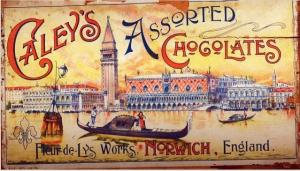
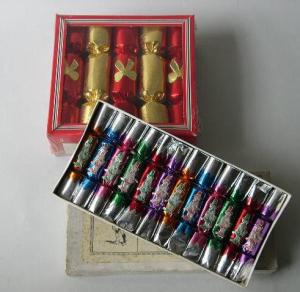

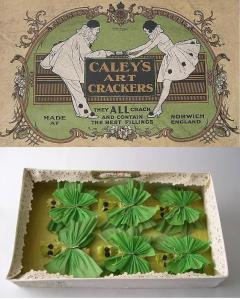
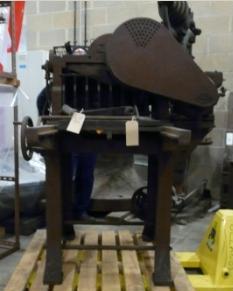
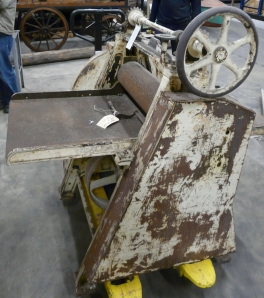
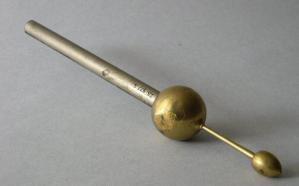





Reblogged this on Old School Garden.
LikeLike
I am currently working on a book containing short biographies of eight Norwich industrialists including Caley and would like to use the Caley advertisement of Venice seen above. Do you know who owns the copyright?
Susan Yaxley, Larks Press
LikeLike
The object is question is part of our collection so we (Norfolk Museum Service) would own the copyright. Please contact us if you would still like to consider using this image.
LikeLike
Pingback: Top 3 Winter Activities | Uncategorized
My mother said that she worked at Caley’s designing the lids of the boxes. She said that a painting she did of swans on a river or lake was used to illustrate the lid of a box of chocolates. Can anyone verify this?
LikeLike
Pingback: 2+2 | Shine A Light
My grandad and granma worked at Macintoshes most of there life my grandad Richard Sinclair has recently past will be dearly missed and his story’s
LikeLike